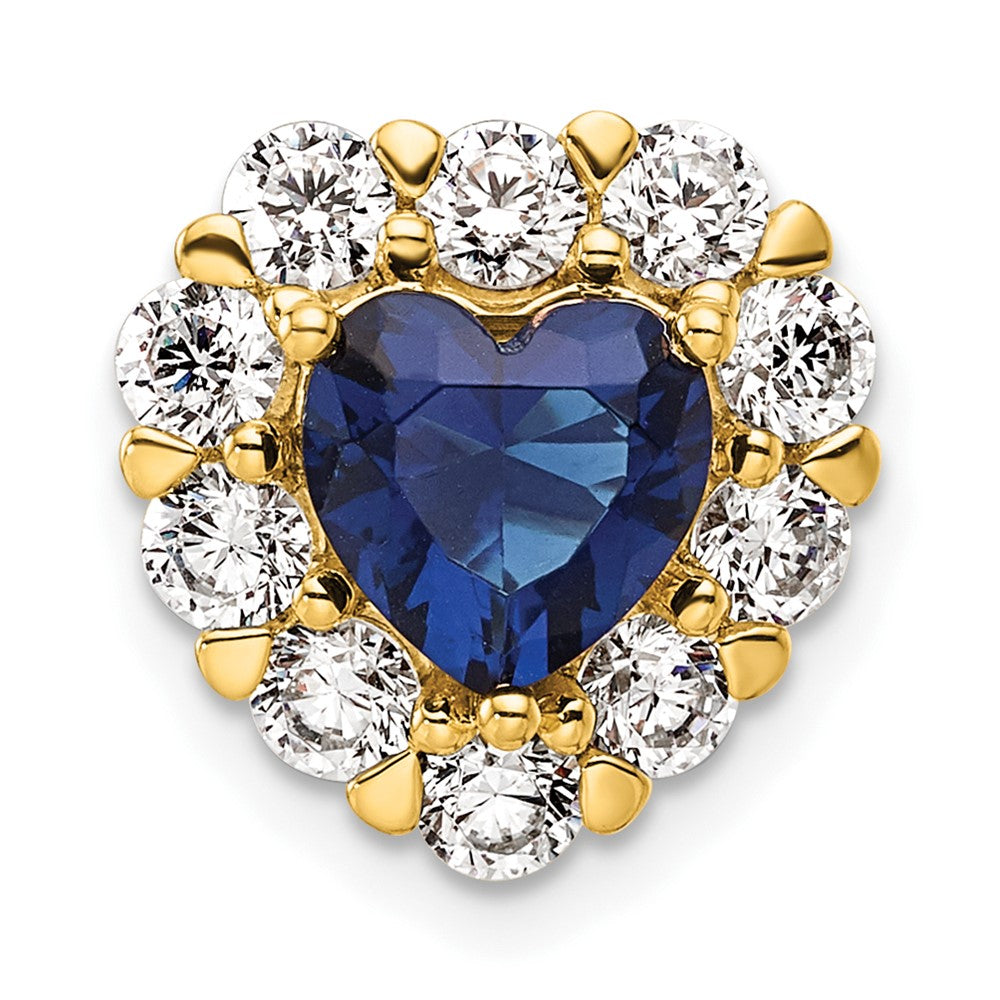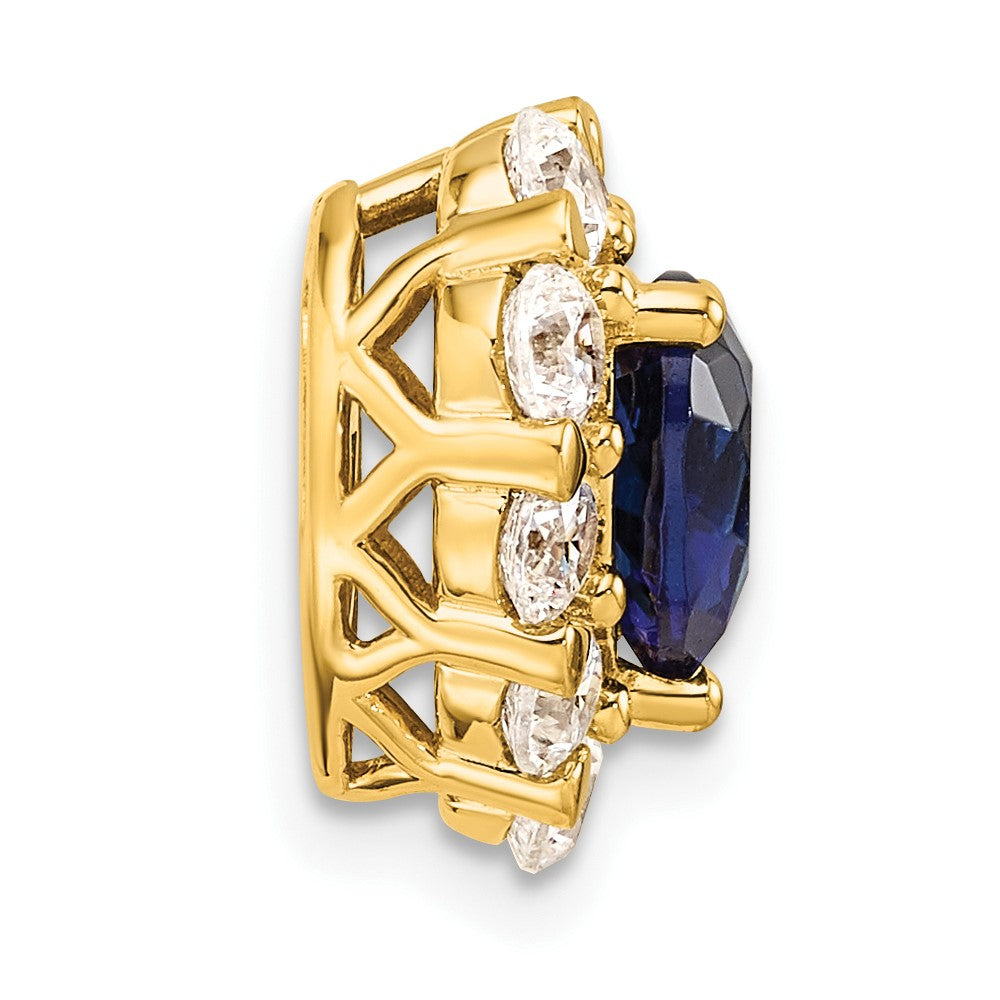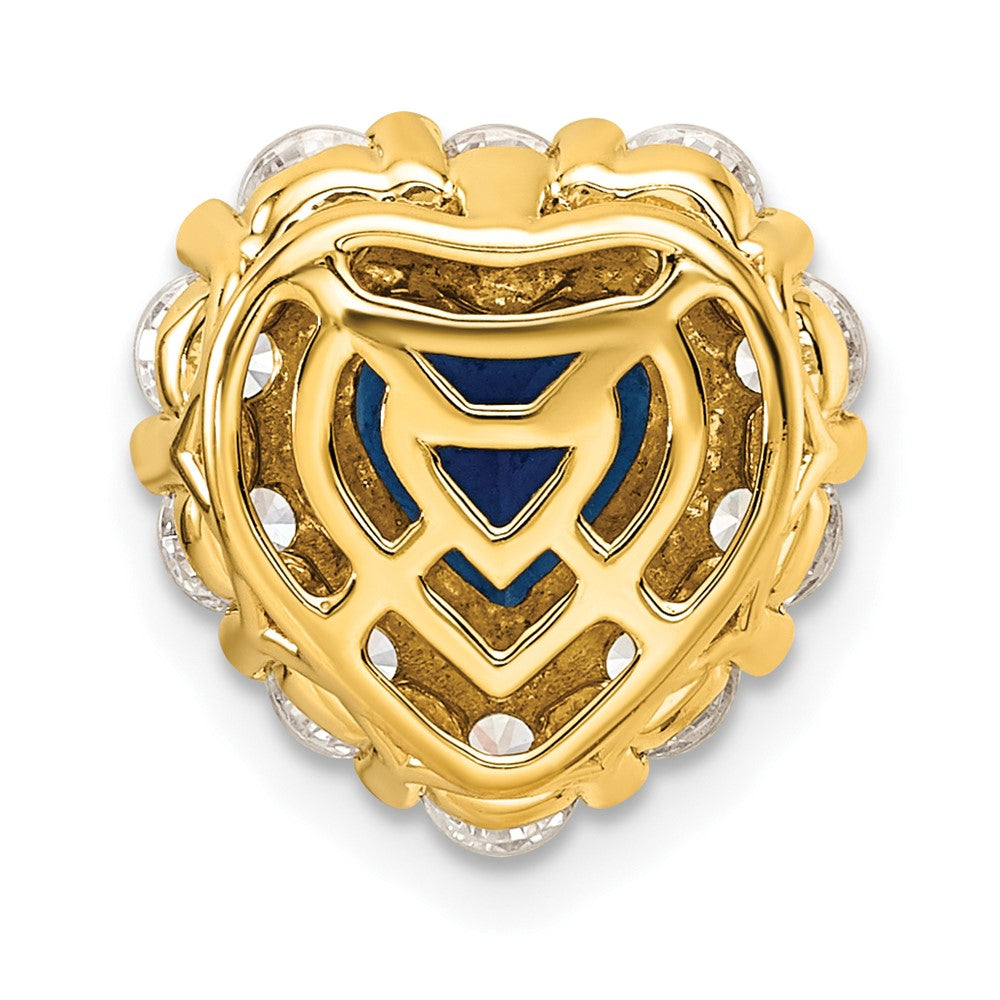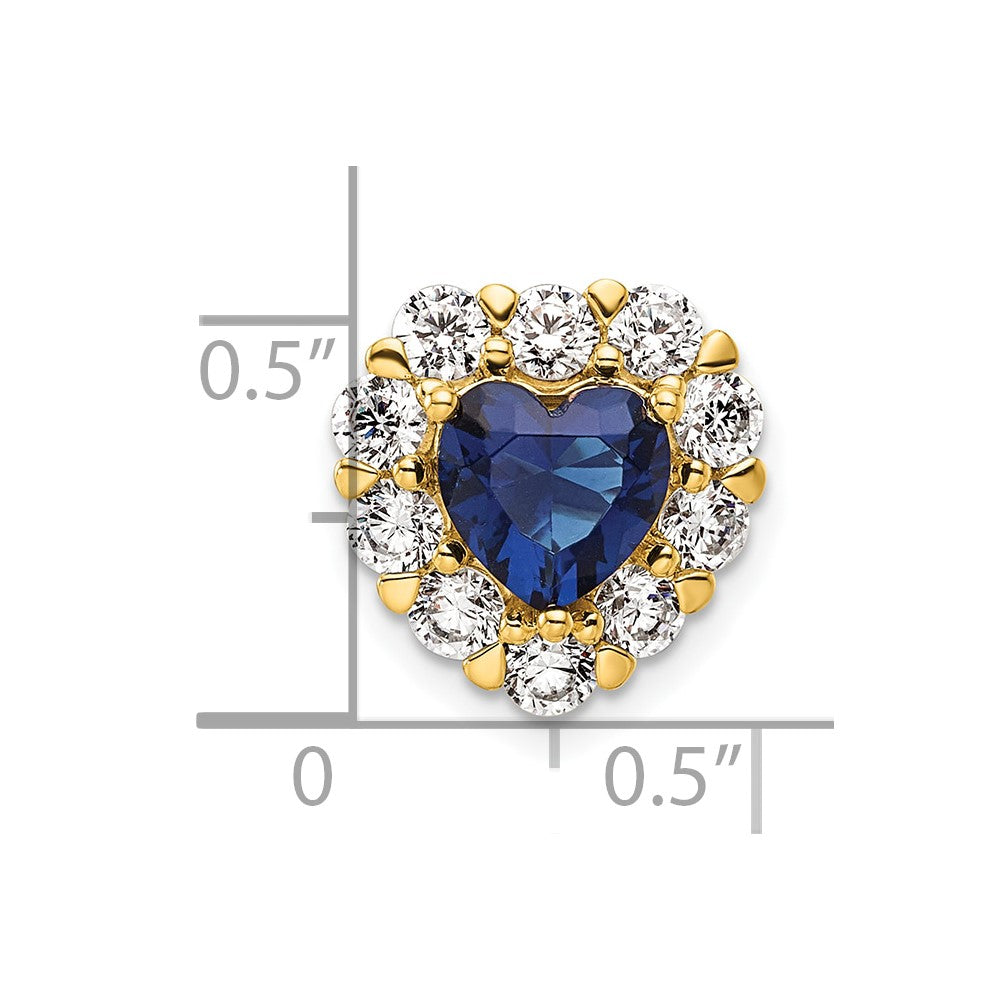
Free Domestic & International Shipping for All Orders Over $250 Shop Now




Discover timeless elegance with the 14k Yellow Gold Lab Grown Diamond and Blue Sapphire Heart Halo Pendant. It features a dazzling 1-carat lab-grown diamond at its center, surrounded by stunning lab-created blue sapphires in a heart-shaped halo. Crafted in polished 14k yellow gold, this pendant is both solid and beautiful. Measuring just over 13 mm in width, it offers a refined touch while remaining eye-catching. This makes it perfect for any occasion. Elevate your jewelry collection with this exquisite 14k Yellow Gold Lab Grown Diamond and Blue Sapphire Heart Halo Pendant.
SKU: PM10227-CSA-100-YLG
UPC: None
Precious Metal Type: 14k Yellow Gold
Length: 12.97 Inch
Width: 13 mm
Weight: 2.19 gm
Diamond Weight: 1 gm
Gemstone Weight: 0.001 gm
What Are Lab-Created Diamonds?
Lab-created diamonds are an exceptional blend of science and craftsmanship. While natural diamonds are formed deep within the earth over billions of years, lab-created diamonds are grown in controlled environments using advanced technology that replicates the natural process. By applying extreme heat and pressure, these diamonds are fully formed within weeks to months. Since they can be produced in abundance, lab-created diamonds are typically more affordable, making larger diamonds more accessible. However, their abundance may affect their long-term value.
Are lab-created diamonds the same as natural diamonds?
Lab-created diamonds share the same optical, physical, and chemical properties as natural diamonds. The primary difference lies in their origin and the time taken to form.
Is a lab-created diamond better?
Both lab-created and natural diamonds vary in grading. Lab-created diamonds often allow buyers to maximize their budget, offering more size for the same cost. Natural diamonds, however, are celebrated as unique works of nature.
Where do lab-created diamonds come from?
Lab-created diamonds are formed in laboratories using advanced technology. A diamond seed—a tiny carbon crystal—is exposed to high heat and pressure with a carbon coating to grow into a larger diamond crystal.
Are lab-created diamonds or natural diamonds higher quality?
Neither type is inherently higher quality, as both are available in a range of colors, cuts, clarity, and carat weights.
Can a trained eye distinguish lab-created from natural diamonds?
Because lab-created diamonds share the same optical, chemical, and physical characteristics as natural diamonds, they cannot be distinguished even under 10x magnification.
Finish: Polished
Charm/Element Thickness: 7.62 mm
Feature: Solid
Thickness: 7.61 mm
What Are Lab-Created Diamonds?
Lab-created diamonds are an exceptional blend of science and craftsmanship. While natural diamonds are formed deep within the earth over billions of years, lab-created diamonds are grown in controlled environments using advanced technology that replicates the natural process. By applying extreme heat and pressure, these diamonds are fully formed within weeks to months. Since they can be produced in abundance, lab-created diamonds are typically more affordable, making larger diamonds more accessible. However, their abundance may affect their long-term value.
Are lab-created diamonds the same as natural diamonds?
Lab-created diamonds share the same optical, physical, and chemical properties as natural diamonds. The primary difference lies in their origin and the time taken to form.
Is a lab-created diamond better?
Both lab-created and natural diamonds vary in grading. Lab-created diamonds often allow buyers to maximize their budget, offering more size for the same cost. Natural diamonds, however, are celebrated as unique works of nature.
Where do lab-created diamonds come from?
Lab-created diamonds are formed in laboratories using advanced technology. A diamond seed—a tiny carbon crystal—is exposed to high heat and pressure with a carbon coating to grow into a larger diamond crystal.
Are lab-created diamonds or natural diamonds higher quality?
Neither type is inherently higher quality, as both are available in a range of colors, cuts, clarity, and carat weights.
Can a trained eye distinguish lab-created from natural diamonds?
Because lab-created diamonds share the same optical, chemical, and physical characteristics as natural diamonds, they cannot be distinguished even under 10x magnification.